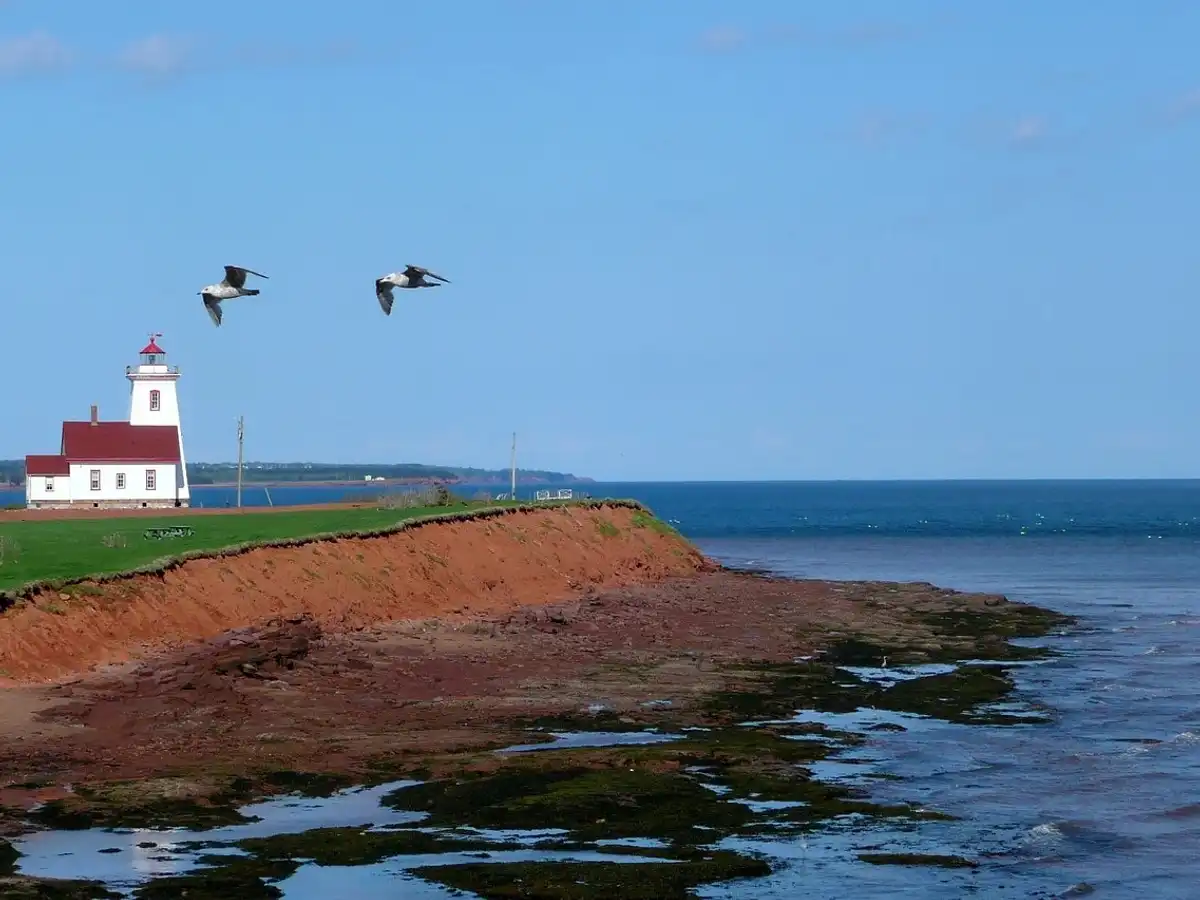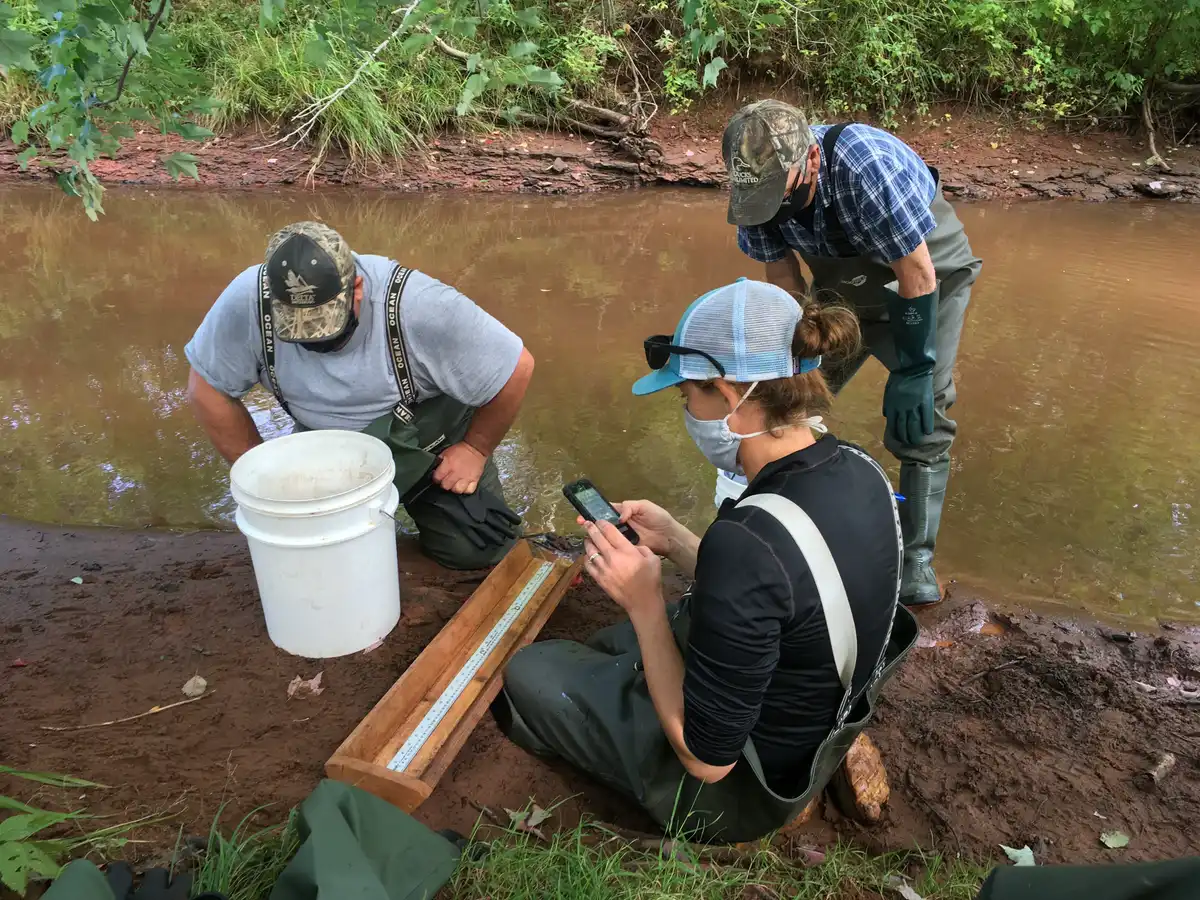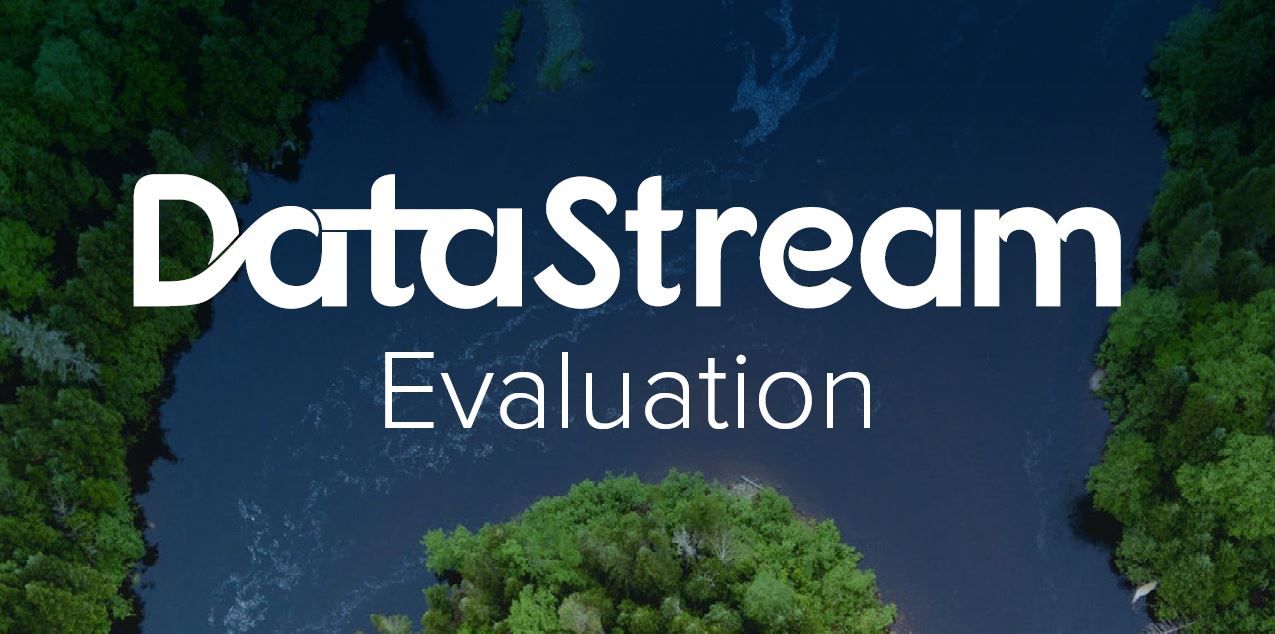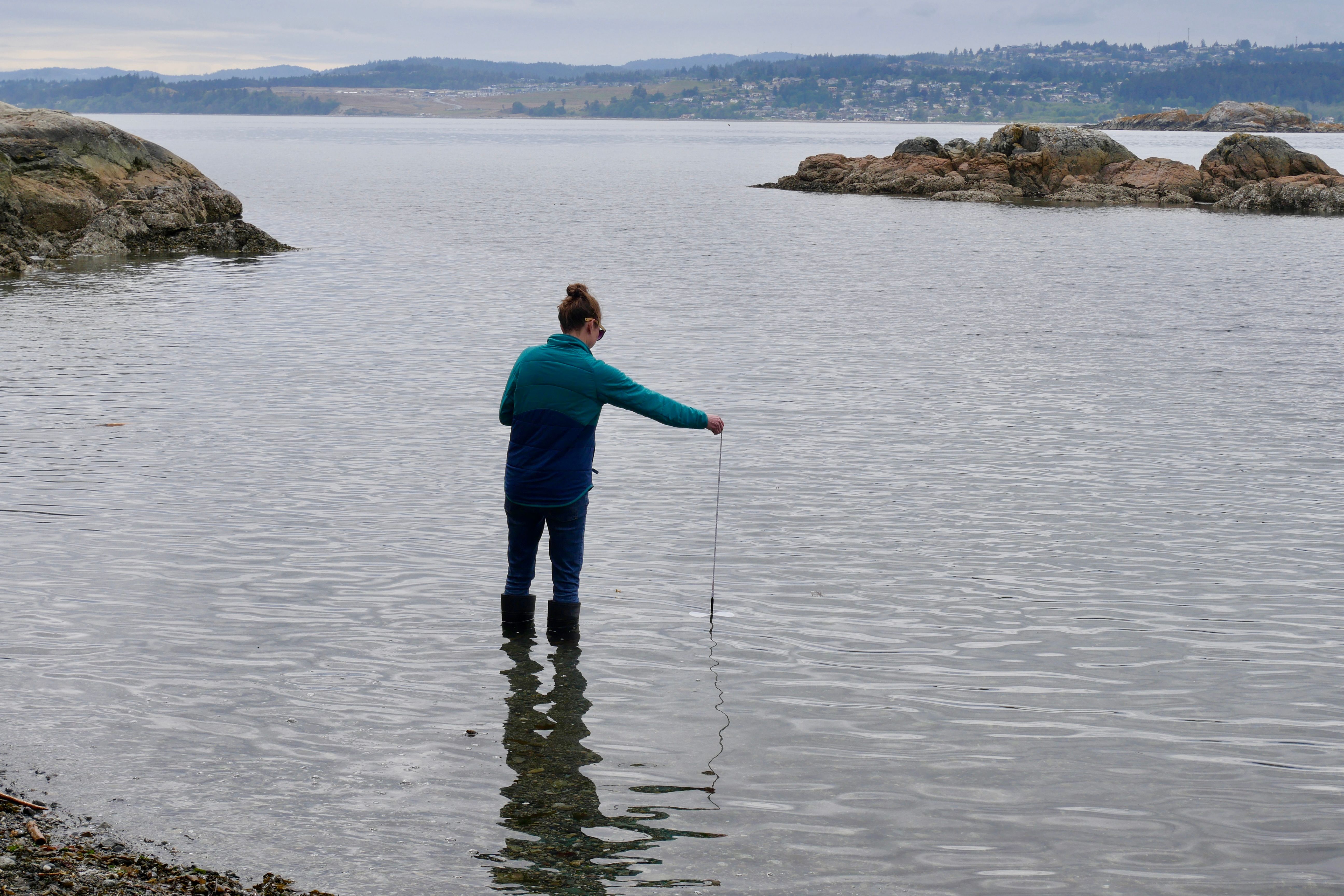
Community Based Monitoring in Action – The PEI Watershed Alliance
September 24, 2020
For the Prince Edward Island Watershed Alliance (PEIWA) the benefits of being based in a small province are clear. “We can be really interconnected, and we can facilitate working together” explains Angela Banks, Project Manager at the Alliance, “when it comes to data management and equipment sharing and stuff like that it’s been really, really helpful to have that umbrella organization.”
The Alliance represents 24 community-based watershed management groups in PEI, a remarkably high number given the Island is just 5,660 square kilometres. One of the many projects the Alliance runs is an equipment bank, where the ability to hire an equipment bank manager, Rebecca Ramos, has been key to its success.
Ramos works with member groups to distribute and install equipment, and then retrieve and share data, for example from temperature loggers at the end of the field season. In addition to temperature, nutrient data is key because of the Island’s landscape, with nitrate concentrations particularly important. Water extraction for agricultural irrigation is also a key issue for the Alliance and their members, especially given the importance of the industry on the Island.
Much of the collected data is then uploaded to Atlantic DataStream, which already contains over a million data points – a fact included in a report submitted to Environment Canada earlier this year. “I think Environment Canada was really happy to hear that,” explains Banks, “we have a platform, it’s working, people are using it.”
PEIWA members were keen to engage with DataStream because they saw it wasn’t just a repository where data goes and is never seen again. Watershed groups can use it to help develop reports and not only visualize their own data, but also data from all over the region.

Training sessions helped PEIWA address technology and data literacy challenges and were a good networking opportunity for members. Having Rebecca to deal with any queries was also vital, “She’s able to travel across the island … so we’re pretty lucky that way” says Banks, “if we do want another training session we can get hold of the Atlantic Water Network [Atlantic DataStream’s regional partner] or The Gordon Foundation folks – people are always there to help.”
Another key stakeholder for the Alliance is the provincial government. Although they had their own database they soon saw the utility of DataStream and are now strong supporters. That relationship has been valuable during the COVID-19 pandemic, as government staff haven’t been able to carry out all the monitoring they normally do, so might be relying on data that community groups collect. To Banks, this makes sense for everyone involved, “If we can show we’re doing it in a consistent way, with calibrated equipment, there’s no reason that the information can’t be used.”
Watershed groups on PEI have still been able to get out and do their work during the pandemic, albeit with more equipment, gloves, and masks. A lot of the monitoring work is putting out probes, which two people can do while social distancing. Travel has been a challenge, as “usually you’d all pile in a car together” explains Banks, who is also looking forward to when groups can all meet in person again.
Looking to the future, Banks sees plenty of opportunities for DataStream to grow – from more water quality data to new data types. “I’m really excited for the potential” she says, “DataStream is great now but I can see it getting huge.”
The results are in! DataStream's 2023 external evaluation
We asked for your feedback, and you delivered! DataStream is pleased to share the results of our 2023 external evaluation.
Job Posting: Executive Director
The Executive Director (ED) will play a pivotal role in leading DataStream at an exciting time of growth.
Join DataStream's Pacific Data Drive
Do you collect water quality data in British Columbia or the Yukon? If YES, we want to work with you!


